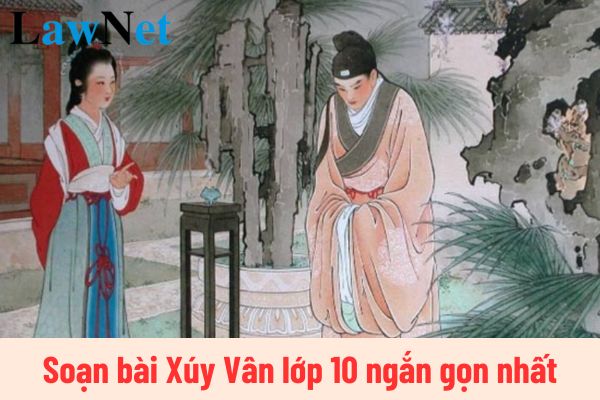What are guidelines for making lesson plan for the work "Xúy Vân" for grade 10 students in Vietnam? What are rights of grade 10 students in Vietnam?
What are guidelines for making lesson plan for the work "Xúy Vân" for grade 10 students in Vietnam?
"Xúy Vân giả dại" is a famous excerpt from the traditional Vietnamese cheo play "Kim Nham". This is one of the finest segments of traditional Vietnamese cheo, loved and frequently quoted by many.
The Story of Xúy Vân
In the cheo play "Kim Nham", Xúy Vân is a woman of perfect talent and beauty. However, her married life is not as happy as expected. To escape her confining life and societal constraints, she pretends to go mad.
"Xúy Vân giả dại" is included in the curriculum of Grade 10 Literature. Below are guidelines for making lesson plan for the work "Xúy Vân" for grade 10 students in Vietnam.
|
Guidelines for making lesson plan for the work "Xúy Vân" for grade 10 students in Vietnam 1. Introduction: |
*Note: Information is for reference only./.

What are guidelines for making lesson plan for the work "Xúy Vân" for grade 10 students in Vietnam? What are rights of grade 10 students in Vietnam? (Image from the Internet)
What are rights of grade 10 students in Vietnam?
Based on Article 35 of the Regulations issued along with Circular 32/2020/TT-BGDDT, the rights of Grade 10 students are stipulated as follows:
- Students have the right to equal access to comprehensive education, are ensured the necessary conditions regarding time, facilities, sanitation, safety for studying in class and self-study at home, are provided with information on their studies and training, and can use equipment and tools for school activities, culture, and sports according to regulations.
- Students are respected and protected, treated equally and democratically, have the right to lodge complaints with the school and education management levels about decisions concerning themselves; have the right to transfer schools when there are legitimate reasons according to current regulations; can advance grade, study beyond the prescribed age.
- Students may participate in activities aimed at developing their talents in subjects, sports, arts organized by the school if they meet the conditions.
- Students entitled to social policy benefits, those facing difficult life circumstances, and students with special abilities have the right to scholarships or other allowances.
- Students can transfer schools if they meet the conditions as prescribed; the school transfer procedures are implemented as regulated by the Minister of Education and Training.
- Students enjoy other rights as prescribed by law.
What are the behavioral regulations for grade 10 students in Vietnam?
Based on Article 36 of the Regulations issued along with Circular 32/2020/TT-BGDDT, the behavioral regulations for Grade 10 students are as follows:
Student Conduct and Attire
1. Students' behavior, language, and attitudes must be appropriate, respectful, polite, friendly, ensure cultural integrity, and conform to the ethics and lifestyle of secondary school age.
2. Students' attire must be neat, clean, tidy, age-appropriate, convenient for studying and activities at school. Depending on the conditions of each school, the principal may decide on uniform attire if agreed upon by the school and the Parent-Teacher Association.
Thus, based on the above regulations, the behavioral conduct for Grade 10 students is defined as: Students' behavior, language, and conduct must be proper, respectful, polite, friendly, ensure cultural standards, and appropriate for the ethics and lifestyle of secondary school students.

